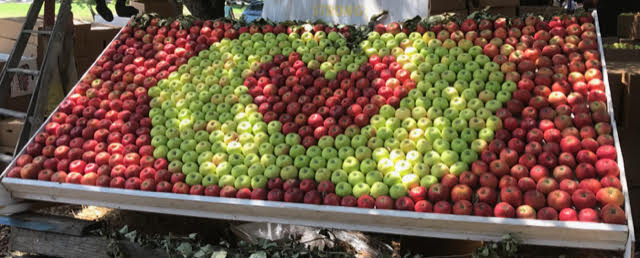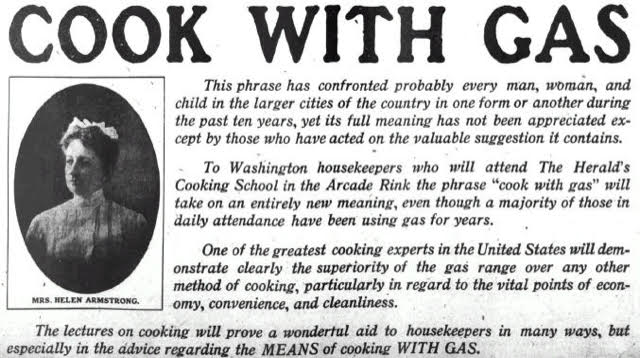
Art | Resources
Is there Glyphosate in Your Breakfast Cereal?

Following last week’s stunning news that a California jury ordered Monsanto to pay $289 million in damages to a man dying of cancer, which he says was caused by his repeated exposure to large quantities of Roundup and other glyphosate-based weed killers while working as a school groundskeeper, Environmental Working Group released the results of their testing of breakfast cereals for glyphosate.
“Glyphosate, an herbicide linked to cancer by California state scientists and the World Health Organization, was found in all but two of 45 samples of products made with conventionally grown oats. Almost three-fourths of those samples had glyphosate levels higher than what EWG scientists consider protective of children’s health with an adequate margin of safety. About one-third of 16 samples made with organically grown oats also had glyphosate, all at levels well below EWG’s health benchmark.”
I’d like to phrase this from a different viewpoint.
45 samples of conventional-grown oats:
43 samples contained glyphosate
31 of the samples had glyphosate levels higher that what is considered safe
16 samples made with organically-grown oats
5 samples contained glyphosate
all were lower than what is considered safe
This tells us that if you eat organic, it’s more likely than not that you won’t be eating glyphosate. But even if you do, it will be at levels considered by EWG to be below the safe levels for children.
EWG: Breakfast With a Dose of Roundup?
Click on link above for more about the testing and a chart of the levels found in various brand-name samples.
Beyond Toxic-Free Industrial Products

I spend a lot of my time (as you know) working on finding and writing about toxic-free, manufactured industrial products because that’s where most people shop.
But for many years now, I’ve actually been living this “other” life that is beyond industrial products. It’s the next level of living toxic-free. Much more difficult and not available everywhere, but oh so rewarding.
I actually started envisioning living this way in 1987 but gave up because I couldn’t find it. But now thirty years later…
Here’s how I spent last Sunday
I spent most of my day going to our local “farm market” (that’s what they call it here, not “farmer’s market”) and also our annual Gravenstein Apple Fair, which celebrates the harvest of the Gravenstein Apples, unique to our area.
Both of these experiences made me very happy I live here as they take my experience of toxic-free living well beyond the action of choosing products without chemicals from store shelves. They take me back to LIFE.
THE CHANGING OF THE SEASON AT THE FARM MARKET
About 30 years ago I began to study nature, and one thing I learned was about the changing of the seasons. On our civil calendar “The First Day of Autumn” has been fixed September 21, but it’s not. The Autumn Equinox that falls on that day is the middle of autumn.
I had an ancient calendar that marked a date in early August as the end of summer and the beginning of autumn and there was a festival to celebrate it. That this time of year was the end of summer and the beginning of autumn was kind of theoretical to me because it is always hot in August wherever I’ve lived, but I could see small indicators.
I’ve now been going to the farmer’s market every Sunday for almost a year, and this week, I really saw that ‘autumn is a comin’ in’. The Gravenstein apples are here, as well as Gravenstein cider and a tent telling you where you can use the community apple press to press your apples for juice. The multicolored cherry tomatoes are gone. My farmer who has been providing gorgeous cherry tomatoes and bell peppers and Persian cucumbers said good-bye to me this week. He won’t be back until January. The entire spectrum of foods in the fields is changing.
While tomatoes are ending, cauliflower is just beginning. I can’t resist these baby cauliflowers. So tender and sweet.

We don’t see this change of season in the supermarket. But it’s very real at my farmer’s market and on my plate.
We’re moving into the time of harvest. I’m working hard now to bring in the “harvest” of the work I’ve been doing all year to move my work to the next level with a new website. I can start to see the new website now. Structure is up. I’m starting to organize data. I’ve found someone to help me with the technical challenges and we were started work on that yesterday. I’m working full speed ahead.
Eating seasonal, local, organic food is part of my “practice” of living toxic-free. It goes beyond reading labels to avoid toxic chemicals in industrial products, to the next level of aligning with life itself.
For the past two weeks we’ve been sampling different varieties of peaches. We’ve been putting each variety in separate bags with their names on them to get to know them. The farmer explained how the best peaches were the first peaches picked from the outside of the tree where they get the most sun and that the following week that week’s varieties would be coming from the inner branches and new varieties would be being picked from the outside of other trees.
Imaging my surprise when I brought these peaches home and cut them open and there was a sunset of colors inside the peach! Not just white or orange, but white and orange and deep red and purple. I though I would pull a photo off the internet with these colors and couldn’t find one. But this week we bought a whole entire box of peaches, and as I was peeling peach-after-peach I discovered the deep turn of color comes from ripeness. I had just never before eaten a peach that was actually ripe. But it’s only ripe like this for moments. The next day they begin to rot.

AND THEN WE WENT TO THE GRAVENSTEIN APPLE FAIR
This was the first time I’ve been to this particular fair and it moved me deeply.
First, it was a city fair, so it wasn’t at a fairgrounds, it was in a park, under oak trees. There were local craftspeople, food tents set up by local restaurants and children showing and explaining their 4H animals, and bands providing music. The entire fair was the city in microcosm. And Gravenstein apples—apple pie baked by the ladies of a local Church who bake the pies every years, apple fritters, apple cider, boxes of apples, bags of apples—all Gravenstein everything. One food stall offered a grilled cheese sandwich made with slices of Gravenstein apple, local blue cheese and local honey. Apples, apples, apples!

Of course, Larry and I walked in an immediately bought a piece of pie to share. I looked up and everyone around me was eating pie made with our local apples, baked with the loving hands of our local women, and tears came to my eyes. This is what creates community. Once of the reasons I left Florida was because I was once told not to bring homemade food for refreshments to a meeting—only packaged foods. Sitting under the oak trees eating apple pie with my community made me feel part of the community, not only in the moment, but part of it’s history past and future.

I had to include this photo above of the disposal area. It’s more that trash and recycling. It was landfill, recycling, compost, and pig food.
But of course. This is a farming community. And so our fair had woodcarving and historic farm equipment and “agrarian games” (I didn’t see those, but I’m thinking they may be like the Scottish Highland games, which are competitions of skill based on things actually done in local work life).
Here the food is seasonal, local, and organic with full disclosure. You can’t buy Mindful Meats online. They are local. And you can call up all these farms on this chalkboard and they will proudly tell you all about how they grow and raise their food. No secrets here.

This is how life should be!!!!! Everywhere.
Enough. I think you get the idea. I feel like I’ve come home.
As we were walking to our car I said to Larry, “This fair is in agreement with me. It’s just how I would design it. And I am in agreement with it. This is where we belong.”
And he agreed.
Safe Pesticide for Spiders?

Question from Michelle
Hi Debra,
I ask this question in the light that we are fighting brain cancer. We are also fighting spiders.
We have done everything possible around the house-changing lighting cans, switch plates, stuffing windows with molding, diatomaceous earth and we are still getting spiders.
I called Ecola and although they pushed their standard pesticide which we will never use, they also mention a “green version” made with “essential oils.”
I asked for the ingredients and they are as follows: thyme oil 20%, 2-phenethyl propionate 14%, rosemary oil 8 % and a combo of polyglyceryl oleate, isopropyl alcohol, wintergreen oil, and isopropyl myristate 58%.
Do you consider this a safe, non-toxic alternative? Thank you very much for your advice and help.
Debra’s Answer
First I want to just be clear that I can’t tell you if any product is “safe” for you.
I can tell you if it contains ingredients that are known to be toxic.
But there is a difference between the ability of a substance to cause harm and whether or not it will cause harm FOR YOU. Many factors about your body can affect how sensitive or tolerant you are to a substance or how well you r body can withstand whatever danger may be present.
That said, here’s what I can tell you about these materials.
Thyme oil, rosemary oil and wintergreen oil are essential oils. They are concentrated oils from plant sources. Some people who are sensitive to these oils react to them, but they are not toxic, per se.
2-phenethyl propionate is a natural substance found in peanuts. It is considered a “low risk pesticide” in the US and can be used here without registration. It is commonly used in natural pesticide products.
Polyglyceryl oleate is not considered be toxic or harmful.
Isopropyl alcohol is rubbing alcohol. It is generally made from petroleum when used as an ingredient. It is not expected to be toxic or harmful.
isopropyl myristate is composed of of isopropyl alcohol and myristic acid, a common, naturally occurring fatty acid. It is not expected to be toxic or harmful.
Based on this information, I would say this is likely to not be harmful. It does not, for example, contain known carcinogens.
It’s about as “not harmful” as a pesticide can be, That said, your body may not tolerate this and other products in ways not accounted for by toxicology.
If I needed a pesticide for spiders, I would use this.
Health Effects of Gas Stoves

I saw a blog on Treehugger that environmental engineering professor Shelly L Miller tweeted a whole rush of scientific papers on the health effects of air emissions from gas stoves, so I had to run right over to her Twitter page and get them for you. Imagine my surprise when I arrived on her page and Twitter said Shelly “follows you.”
As a home cook I am a fan of using gas over electric, and thought I was doing OK because I kept my stove well-adjusted. But when I started checking my indoor air with a real-time monitor, the VOCs spiked every time I cooked something on the stove.
Now here’s the scientific data about how that’s harmful to health.
BTW, I’m no longer cooking with gas. I either use my induction burner in my tiny kitchen or my mother-in-law’s electric stove.
NOTE some of these links are unclear, but I’ve just put everything here as I found it. I’ll continue to add to this list and feel free to add studies you find in the comments.
From Shelly Miller’s:
Induction stoves a great option for consumers to move towards a fossil-fuel free home, plus it eliminates a huge source of pollution (NO2, CO, particles) in the home. #healthyhome #indoorairpollution
7 Aug 2018
Get ready, I’ll be posting a bunch of references/studies on the association between adverse respiratory health and gas stoves #sciencetwitter #indoorairpollution #healthyhomes
8:46 AM – 8 Aug 2018
From the #SixCities study: strong evidence for causal effect of 2ndhand smoke on increased respiratory illness and exposure to gas stoves associated with reduced pulmonary function – all in children. https://www.atsjournals.org/doi/pdf/10.1164/arrd.1984.129.3.366 …
8:51 AM – 8 Aug 2018
Respiratory symptoms were more common in children exposed to a gas stove. “Respiratory Symptoms in Children and Indoor Exposure to Nitrogen Dioxide and Gas Stoves” | American Journal of Respiratory and Critical Care Medicine https://www.atsjournals.org/doi/abs/10.1164/ajrccm.158.3.9701084 …
8:53 AM – 8 Aug 2018
Women who used gas for cooking had increased risk of asthma-like symptoms and had reduced lung function and increased airways obstruction compared to those who did not use gas https://www.sciencedirect.com/science/article/pii/S0140673696900094 …
8:56 M – 8 Aug 2018
Children from households with gas stoves had a greater history of respiratory illness before age 2 and small but significantly lower levels of FEV1 and FVC corrected for height https://www.atsjournals.org/doi/abs/10.1164/arrd.1980.121.1.3 …
9:02 AM – 8 Aug 2018
#openaccess and shows the impact of using ventilation while cooking Shelly L Miller added,
9:05 AM – 8 Aug 2018
In homes using gas stoves, children whose parents reported using ventilation when using the stove had higher lung function and lower odds of asthma, wheeze, bronchitis compared to homes that never used ventilation or did not have ventilation available
9:05 AM – 8 Aug 2018
OK thats enough on gas stoves & respiratory health for now. Over 25 years ago when I was a PhD student at Berkeley talking to an EPA scientist about the most important #indoorairquality issue, and he said: gas stoves, because the association with adverse health is clear.
9:16 AM – 8 Aug 2018
And yet another study showing CO2 levels in offices above 1000 ppm causes lower cognitive functioning. Great study @j_g_allen Shelly L Miller added,
9:17 PM – 9 Aug 2018
Exploding Glassware and Other Hazards of Tempered “Safety” Glass
This morning I received an email asking for a brand of glass that doesn’t shatter.
The reader had just had a Duralux glass shatter into “a thousand pieces” in her daughter’s hand.
This is not the first time I’ve heard about various glass items spontaneously shattering.
But I have never never never in 40 years of using only glass glassware of various types…I have never had a glass shatter in my hand or sitting on a shelf or in any other way, shape or form.
So I decided to look this up in the internet and see if it had been investigated as a hoax.
The first thing I found was an informative blog post from another mom who had experienced shattering with the same type of Duralex glass. She had done some research and had found a reference that explained there is a phenomenon by which toughened (tempered) glass may spontaneously break without any apparent reason.
Then amazon had more than two dozen reviews with similar stories of shattering.
Here’s another discussion group where many users had theirs shatter and many others had no problem.
But for those that had the glassware shatter, they all say the same thing: it shattered into a million pieces, “not like any glass I’ve seen break before.”
There’s no mention of any kind of hoax.
As I continued to research I found this shattering is not limited to glassware, it’s any kind of tempered glassused to make any kind of product (see the video).
Ironically, it’s called “tempered safety glass” and is designed to break into those tiny pieces instead of big shards of glass that are even sharper. [How and why tempered safety glass was developed CHICAGO WINDOW EXPERT: Safety Glass: Is it Really Safe?]
Apparently microscopic imperfections during the manufacturing process eventually grow for days, months and years — long after a customer buys the glass product.
So what can we conclude from this?
Glass has been used for centuries to make household items. Really. It’s a pre-industrial material. When I was in Cologne, Germany I visited the Ancient Glass collection and was awestruck by the beauty of this handmade glass.
Glass is not toxic unless toxic metals are added (such as leaded crystal glassware).
Glass can break. Tempered glass can shatter.
When I was much younger, glass was universally used as a packaging material. But shampoo bottles would slip out of soapy hands and break, which is why all shampoo and many other products are now packaged in plastic.
But I have never had any glass spontaneously break that I’ve ever used. Of course, some glass items break if I drop them.
Perhaps it’s because I tend to buy glass items that are more heavy duty. I’m looking around on my desk and I have a tumbler made of recycled glass that is about 1/4” thick. I’m not going to drop it on the floor as a test, but I’m thinking if it did, it would break into a few large pieces. Likewise my water bottle is very heavy glass. I have had a few delicate pieces, but they don’t last long because they break if they are not handled very carefully.
My conclusion is we shouldn’t abandon glass altogether, but we need to learn a lot more about it to be able to use it wisely and safely.
There are many risks in life. Just because a glass might break doesn’t mean we should never use glasses. That would be like saying one is never going to ride in a car or cross a street because there are accidents. But we take precautions to reduce risk.
More to come about glass…
Window Air Conditioner Without Odor?

Question from Bonnie
Hi Debra,
I have owned Kenmore window ac over the years – no chemical odors.
I have a new one and now is 3 months old – still has the new smell chemical.
Could you post to ask others if they found one that has less odor. Thank you.
Debra’s Answer
OK posted. Readers, any recommendations for a window air conditioning unit that doesn’t smell like plastic?
Cloth-covered Ethernet Cable

This cloth-covered ethernet cable is available online.
Question from Lindsey
Hi Debra,
Can you tell me if you know of a lead-free Ethernet cable? There are cloth-covered extension can red (links found on your site) & cloth-covered USB but I can’t find any Ethernet cables. Thank you!
Debra’s Answer
Here’s one: Vandesail Cat7 Ethernet Cable, Cat 7 RJ45 LAN Network Cable, High Speed Durable Nylon Braid STP.
It’s nylon. Not perfect, but no lead. 🙂
Also here is a “cable sash” you can use to cover PVC cables or bundle cables together. And another cable sleeve with a zipper. Both nylon.
I have been known to wrap cords with wired floral ribbon, which comes in pretty colors. The wire in the ribbon helps it stay in place.
Car Floor Mats Exposure

Question from Catherine
Hi Debra,
I just arrived in California to attend a weddinga nd my sister lent us a truck she has used in her business, so it’sa little rough.
My husband drove my two young daughters to the beach and hiking in it. I finally jumped in it when I was hit with a strong PVC (I think that was what is is) chemical odor and could smell it coming from the plastic floor mats. I had no idea that such toxic mats were in the vehicle, and to know my two kids were being driven in it for hours over a few days. I was so upset. The mats are apparently years old and no one else seemed bothered by them but me, butt hey smelled so strong I was hit with the odor when the door was opened.
My first question is are my children in danger from their exposure? Do I need to clean their shoes etc?
And how do you handle family who think your concerns are silly or when they don’t take your concerns seriously?
Debra’s Answer
I also don’t like the smell of floor mats, but let’s take a look at what they are actually made from before we figure out the danger.
Here’s a couple of paragraphs from an article about materials used to make floor mats and liners.
What are the all-weather floor mats and liners made of?
In order to withstand punishing year-round weather conditions and serious spills, the all-weather floor mats and liners are made from durable materials. Most of the all-weather floor mats are crafted from heavy-duty rubber, which can survive serious abuses virtually unscathed. However, the lighter-duty Catch-All Floor Mats use a thick weave of nylon rather than rubber, but they can still be washed off with a hose.
Floor liners are also made from ultra-durable materials, many of which are proprietary fabrications by the different companies. For example, Husky Liners developed a rubberized-plastic material called polydurathene, which is guaranteed not to crack, splinter or break for 99 years. What’s more, the scientists at Xtreme created Xynet, a resin with the look and flexibility of rubber. Xynet is impervious to the most common chemicals found in and around your vehicle, such as motor oil, gasoline and even battery acid.
That said, I searched specifically for “PVC auto floor mats” and they came right up.
So let’s assume they are PVC.
I’m not worried about your children having this one exposure. The problem is being exposed to these chemicals day-in-and-day out. I would be much more concerned if you told me your children were sleeping every night on a crib mattress with a vinyl cover.
Cleaning their shoes won’t do much by now.
How do you handle your family? All I know to do is education. I’m actually working on putting together some materials that I hope will be more convincing for people who are not yet aware that they need to be concerned about toxics.
I don’t have floor mats in my car. If you think you need them, those made from nylon would be the least toxic. Or I might cut some natural sisal mats to fit.
Readers, any recommendations?
How to clean wood kitchen cabinets?

Question from Colleen
Hi Debra,
I have original Scheirich wood kitchen cabinets in our kitchen. How do I go about cleaning and fixing water damage on the front of the cabinets below the sink and cleaning grease and greasy fingerprints off them. I don’t know what type of finish is on them. Can anyone help? I have MCS and anything with fragrance cause migraines and breathing problems. Thank you!
Debra’s Answer
The first thing I would do is contact the manufacturer to find out the standard care instructions and then figure out how to do the same thing in a nontoxic way. But looking online it seems like this brand is no longer being sold.
Here’s a whole pinterest page about “restoring mid-century wood cabinets”.
I had to smile when I saw this.
I grew up in a mid-century suburban house. My parents bought it in 1962 when I was 7 years old for $19,000. Now those homes are about $500,000.
Here’s an article about cleaning kitchen cabinets using Murphy Soap.
However, Murphy Soap contains fragrance. I see you can substitute unscented liquid castile soap for Murphy’s Soap.
Maybe my friend Gina will jump in and tell us how she cleans wood cabinets. She’s been a professional natural cleaner for as long as I have been writing about toxic-free products. Gina!!! Come help!!!
JUST AN ASIDE: While I was researching this I came across an EWG review of Murphy’s Oil Soap. Fragrance is NOT listed on their list of known ingredients (though it does say citronella oil) and it says “ingredient disclosure: poor” All they need to do is go to the Murphy’s Oil Soap website to find out there is fragrance. This is just one example of why I do my own research and don’t rely on EWG.
Be Prepared to Purify Your Indoor Air in a Crisis

A view from the east bench taken about 1 p.m. Sunday, Aug. 5, 2018, shows ozone-heavy skies in the Las Vegas valley. (Kevin Janison | KSNV)
One of my most favorite readers sent me an article last week about air filters—one of those 10 tips articles that someone writes who doesn’t know anything about the subject. She thought I should write something on this topic, so here I am.
I agree that during a crisis—whether it be a fire, nuclear attack,or any calamity—outdoor air could be compromised. And last summer I had that experience first hand when I was mere miles from the Sonoma County Firestorm. I had to leave my home in the middle of the night and go to the beach to breathe, just a few nights after I arrived in California.
And now here we are in fire season again in California. At the moment we are fine. But you never know when there will be smoke or where it will go.
The photo above was taken Sunday afternoon in Las Vegas—445 miles as the crow flies.
When the smoke arrives, it’s too late to get an air filter.
 I was a Girl Scout when I was younger. And the Girl Scout motto is “Be Prepared.” The idea is, obviously, if you learn what to do in life or in an emergency before it happens, you’ll suffer less, or you may not suffer at all.
I was a Girl Scout when I was younger. And the Girl Scout motto is “Be Prepared.” The idea is, obviously, if you learn what to do in life or in an emergency before it happens, you’ll suffer less, or you may not suffer at all.
Air filtration is just one of those things you just need to be prepared for.
And you only have seconds to get air filtration going when you need it most:
- Between 30-180 seconds of oxygen deprivation, you may lose consciousness.
- At the one-minute mark, brain cells begin dying.
- At three minutes, neurons suffer more extensive damage, and lasting brain damage becomes more likely.
- At five minutes, death becomes imminent.
- At 10 minutes, even if the brain remains alive, a coma and lasting brain damage are almost inevitable.
- At 15 minutes, survival becomes nearly impossible.
AIR IS THE MOST ESSENTIAL THING TO LIFE
Q&A: The Greatest Danger to Firefighters Isn’t the Fire—It’s Cancer from Toxic Smoke







